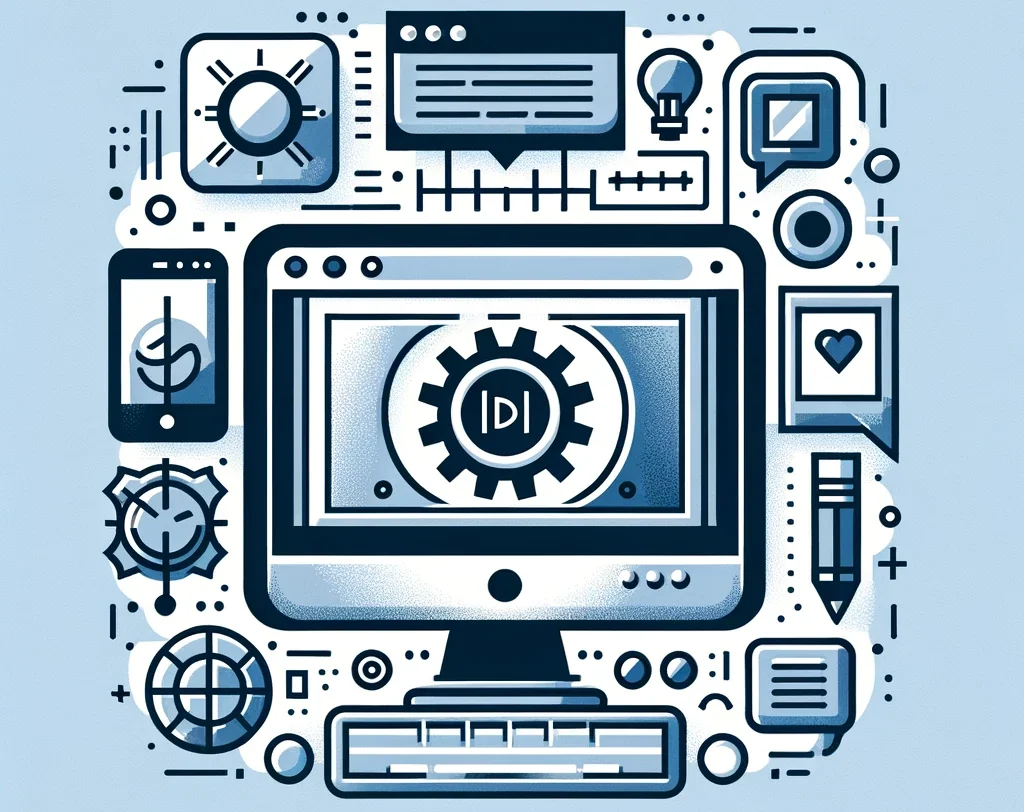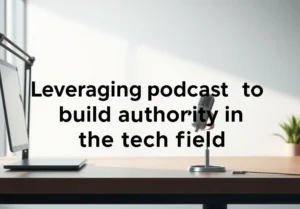Snapping up a Job with a Click of Design—How does that sound for a career move
Tackling job hunts can be exhausting, but your Web Design Certificate might just be the key you need to unlock the door to your future career. In this blog post, we’ll take a close look at the doors a Web Design Certificate can open for you and how to push through them effectively. Get ready to learn how to leverage your new skills for a successful job hunt!
Is a Web Design Certificate Enough to Land a Job?
In the fast-paced world of web design, a certificate can be a stepping stone to getting your foot in the door. But is it enough on its own? The short answer is: it helps, but there’s more to the story. When it comes to entry-level web design positions, employers often seek a blend of education, practical experience, and a portfolio that showcases your skills.
While a web design certificate proves you’ve covered the basics, most hiring managers are looking for proof of what you can do. That’s where your portfolio comes in—it’s your chance to dazzle them with what you’ve learned. Don’t skimp on this, flesh out your portfolio with projects that demonstrate your range and abilities. Experience can also tip the scales in your favor. Whether it’s through internships, volunteering, or freelancing, real-world application of your skills can make a significant impact.
So, while a certificate alone may not be the golden ticket, it’s a valuable asset when combined with a robust portfolio and some hands-on experience. Aim to balance all three to increase your job prospects significantly.
What Kind of Jobs Can You Land With a Web Design Certificate?
With a web design certificate tucked under your belt, you’re looking at a plethora of job opportunities. The digital realm is vast, and your skills are in demand across various sectors. Here’s a peek at the kind of roles you might find yourself vying for:
- Web Designer: A classic role where you’ll bring websites to life, focusing on layout, colors, and user experience.
- Front-End Developer: Here, you’ll get down and dirty with code, turning design into reality with HTML, CSS, and JavaScript.
- UX/UI Designer: These roles concentrate on a user’s interaction with the site, aiming for the sweet spot of functional and fabulous.
- Digital Designer: This job goes beyond websites to include digital advertising, interactive apps, and sometimes even games.
- Content Management Systems (CMS) Specialist: If you’re into platforms like WordPress or Drupal, there’s a niche for customizing and managing content systems.
Web design skills are like keys that open many doors. From traditional tech companies to the non-profit sector, from start-ups to giant corporations, if they’ve got a website, they need your skills. Flex those design muscles and who knows where you might end up!
How Can You Boost Your Employability With a Web Design Certificate?
Alright, so you’ve got a web design certificate. Now let’s talk turkey: how do you make yourself irresistible to employers? Here are some surefire ways to turn that certificate into a career-launching power-up:
- Craft a Killer Portfolio: This is non-negotiable. Show off a variety of work—client projects, personal designs, or class assignments—to flaunt your skills.
- Snag Real-World Experience: Whether through internships, volunteering, or side gigs, get your hands dirty with actual projects. It counts.
- Never Stop Learning: The tech field never stands still, and neither should you. Keep up with the latest trends, tools, and tech to stay fresh.
- Network Like a Pro: Rubbing elbows at industry meetups or online forums can lead to job tips, mentorship, and valuable connections.
- Brush Up on Complementary Skills: Knowing some basics of SEO, digital marketing, or even copywriting can set you apart from the pack.
But here’s an extra nugget that some might overlook: Dive into the analytics side of things. Understanding how users interact with your designs can give you groundbreaking insights that employers love. This means getting familiar with tools like Google Analytics. It’s a unique angle that can make you stand out from the crowd.
Your web design certificate is more than just a piece of paper—it’s a foundation. Build on it with continuous learning, practical experience, and a portfolio that pops. Keep your finger on the pulse of the industry, and you’ll be maneuvering your career like a pro in no time.
Can Freelancing Be an Option After a Web Design Certificate?
Absolutely, freelancing is a fantastic road to journey down with a shiny new web design certificate in your pocket. It’s the ultimate playground for applying those fresh skills and sailing the seas of limitless opportunity. Let’s get down to brass tacks.
To kick off your freelance career, scout for work on established platforms like Upwork, Freelancer, and Fiverr. But don’t stop there—tap into industry-specific job boards like Smashing Magazine’s job listings or Authentic Jobs. These are gold mines for web design gigs.
Now, setting your rates might feel like a high-wire act. But don’t take a shot in the dark. Research the market to understand the going rate for your skill set, considering factors like experience, project complexity, and turnaround time. Start competitive, but don’t sell yourself short.
Running a freelance business means wearing many hats, from designer to accountant. Use tools like FreshBooks or QuickBooks to keep your finances in check. And don’t forget to nestle into a community—forums or local meetups can be treasure troves of advice and support. Plus, they’re a great way to fight off the freelancer’s occasional arch-nemesis: isolation.
Building Your Freelance Brand
Now, roll up your sleeves—it’s time to craft a brand that’s as unique as a snowflake. This is where you put your individual stamp on the world.
- Get yourself a killer website. It’s your digital storefront and portfolio all wrapped in one.
- Create a memorable logo and a catchy tagline that encapsulates your ethos.
- Blogging can flex your industry muscle. Share insights and tutorials to show you know your onions.
Networking is your ace in the hole. Platforms like LinkedIn and Twitter can be your digital megaphones, amplifying your voice in the web design community. And let’s not forget the impact of creative networks like Behance and Dribbble, where your work can strut its stuff.
Leverage the power of testimonials. Positive client feedback is like gold dust—sprinkle it across your marketing channels, and watch trust in your brand grow.
Setting Up for Success
Dotting the I’s and crossing the T’s is crucial when laying the groundwork for your freelance venture. Let’s talk legal. For peace of mind, consider setting up an LLC or operating as a sole proprietorship, depending on what suits your business best.
When it comes to money matters, it’s a wise move to have a separated business account to keep things crystal clear. Tools like Wave or Xero can be lifesavers for handling invoices and tracking expenses.
Time management is your trusty sidekick. Apps like Trello or Asana can become your virtual PAs, keeping projects ticking over like clockwork. But here’s a nugget of wisdom that’s often overlooked: schedule regular self-care. Burnout isn’t a badge of honor—it’s a one-way ticket to dropped balls.
Dive into your web design freelance adventure with these tricks up your sleeve, and you’ll be set to turn heads and win hearts. Remember, the details are not just the details; they make the design. Go ahead and make your mark!
How Do You Network and Market Your Web Design Skills Effectively?
Networking and marketing are crucial in the web design field, blending online savvy with traditional methods. Start by refining your online presence; a standout LinkedIn profile, active participation in design communities like Behance and Dribbble, and sharing insightful content on platforms like Medium can boost your visibility.
And here’s a unique nugget: Offer to help non-profits or local businesses with their web design needs. It’s a move often overlooked but a fantastic way to add to your portfolio, get testimonials, and do some good all at once.
Don’t underestimate face-to-face interactions either. Attend industry events and workshops to engage with peers and potential clients, and always have a creative business card on hand. Offering your services to local businesses can open doors to new opportunities.
Your portfolio is your strongest marketing tool. Ensure it showcases not just your final designs, but the process and problem-solving behind them. Including client testimonials and detailed case studies adds credibility. Also, consider teaching webinars or speaking at events to highlight your expertise.
Effective networking in web design is about making genuine connections and being visible in both digital and real-world platforms. Be proactive and open to opportunities, whether online or in person, as your next big break could be just a click or a handshake away.
What Additional Skills and Tools Should You Learn to Complement Your Certificate?
Gearing up with a web design certificate is just the start of your journey into the world of digital craftsmanship. To truly shine and stand apart from the crowd, dipping your toes into a pool of complementary skills and cutting-edge tools isn’t just smart—it’s essential. Let’s dive into what else you should have up your sleeve to level up your game in the job market.
Familiarize Yourself with SEO Essentials
Search Engine Optimization (SEO) is the secret sauce to making any website not just look good, but also perform well on search engines like Google. Mastering the basics of SEO means understanding how to make your designs searchable and user-friendly. Here’s a little something you might not hear every day: Learn to measure SEO effectiveness. Tools like Google Analytics can help you analyze website traffic, a pivotal skill to discuss the performance impact of your design work with potential employers.
Dive into Content Management Systems
Content Management Systems (CMS) like WordPress, Joomla, or Drupal are the backbone of many websites. Knowing your way around them can be a game-changer for web designers. With WordPress running over 40% of the web, being adept at customizing themes and plugins makes you a sought-after professional. It’s often the little things that count—a unique tip is to get comfortable with accessibility standards within these platforms, assuring that websites cater to all users, a key concern that many designers overlook.
Understand the Power of Graphic Design
Finally, let’s talk visuals. Graphic design principles, such as layout, color theory, and typography, are integral to creating visually appealing sites. Embrace tools like Adobe Photoshop and Illustrator to craft compelling images and logos. Here’s an insider tip: Infuse some motion graphics skills into your repertoire. Learning the basics of animation can set your designs in motion, literally, providing an interactive user experience that screams “21st century”.
To sum it up, here’s a quick checklist of skills and tools to bolster your web design certificate:
- SEO Basics – Keywords, metadata, and understanding analytics.
- CMS Proficiency – Especially in WordPress, but also get to grips with others like Joomla and Drupal.
- Graphic Design Principles – The use of color, space, and typography to enhance visual storytelling.
- Image Editing Software – Adobe Suite expertise to create engaging visuals.
- Motion Graphics – Adding animations to make designs pop and engage users.
Putting these extra tools in your belt not only makes you more versatile but also more appealing to employers who are looking for that swiss army knife of a designer. Keep your skills fresh, and always be on the lookout for the next big thing in web design technology, because, in this rapidly evolving field, standing still is not an option.
Remember, each additional skill not only adds a layer to your professional profile but also opens up doors to opportunities that may have otherwise been closed. With this holistic approach to your development, you’re not just a web designer; you’re a multifaceted digital creator ready to take on the world—or at least the World Wide Web.
Quick Takeaways
Dive deep with these distilled droplets of wisdom from our web design certificate voyage:
- Portfolio Power: Unleash a visual vault showcasing your skills; it’s your handshake in the digital domain.
- Connect & Conquer: Forge the future through networking; relationships are the ramps to professional pedestals.
- Skill Synthesis: Augment with SEO savvy and CMS command; they’re your trump cards in the tech arena.




